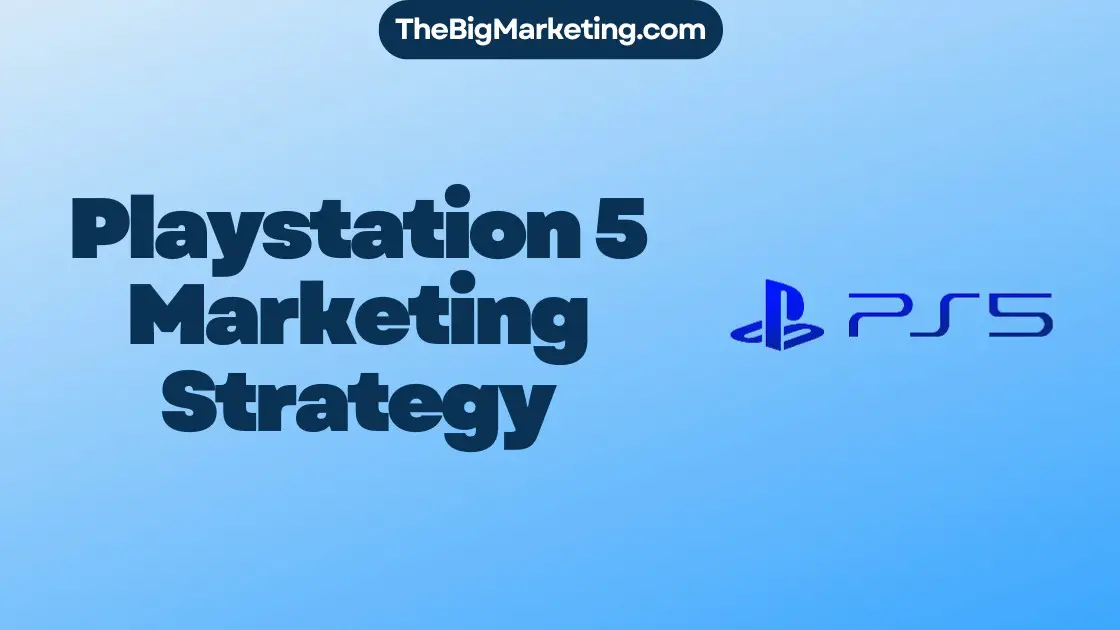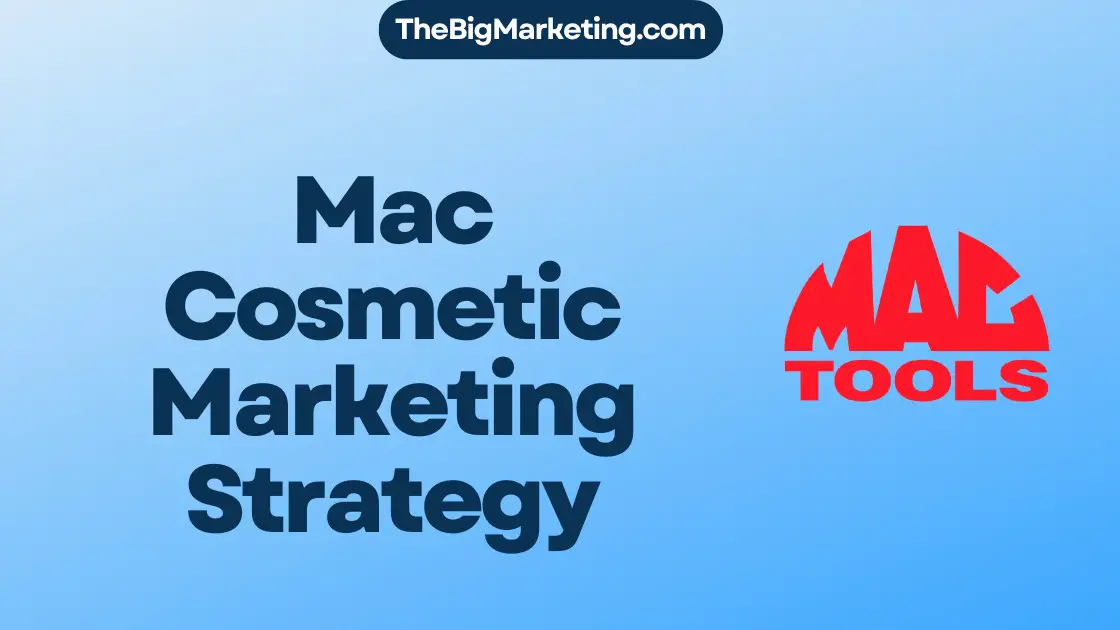Dolce & Gabbana, a renowned Italian luxury brand, faced significant challenges and controversy when a video posted on Instagram generated backlash, sparking accusations of racism and sexism. This case study explores the impact of social media on Dolce & Gabbana’s marketing strategies and the lessons learned from this incident.
Key Takeaways:
- Dolce & Gabbana faced backlash and controversy due to a video posted on Instagram
- The incident highlighted the power and risks of social media in marketing strategies
- The brand’s reputation and sales were significantly impacted in the Chinese market
- Effective brand image enhancement and cultural sensitivity are crucial in the luxury fashion industry
- Dolce & Gabbana can recover and rebuild its brand image through inclusive marketing initiatives
The Controversial Video and Social Media Backlash
The controversial video that caused a social media backlash and controversy for Dolce & Gabbana was originally posted on Instagram. The video featured a Chinese model attempting to eat Italian dishes with chopsticks, which eventually led to her embarrassing herself. However, the response from viewers was far from positive, as the video received thousands of negative comments accusing the brand of promoting stereotypes and racism.
The backlash on social media platforms was swift and severe. The video was taken down by Weibo, one of China’s largest social media platforms, which ultimately led to the cancellation of Dolce & Gabbana’s planned fashion show in Shanghai. The brand’s Instagram account also faced its fair share of backlash when designer Stefano Gabbana allegedly made derogatory comments about China in a private conversation.
This incident highlights the power and impact of social media in today’s digital age. A single misstep can lead to significant repercussions for a brand. In the case of Dolce & Gabbana, the video caused outrage among consumers and damaged the brand’s reputation, particularly in the Chinese market where the incident took place.
Impact on the Chinese Market
The backlash faced by Dolce & Gabbana had a profound impact on its presence in the lucrative Chinese market. Chinese consumers, including celebrities, models, and guests, boycotted the brand, resulting in the removal of Dolce & Gabbana items from various e-commerce platforms. China has long been a critical market for luxury brands, and Dolce & Gabbana, like many others, relied heavily on its sales and exports from this country. However, the fallout from the controversy not only affected the brand’s sales but also inflicted damage to its reputation within the Chinese market.
China is a country with a growing luxury market, and brands must navigate its unique cultural landscape with caution. Dolce & Gabbana’s misstep had immediate and tangible repercussions, leading to a loss of customer trust and loyalty. The brand’s association with offensive content resulted in a significant decline in sales and diminished brand perception among Chinese consumers. The incident highlighted the importance of understanding cultural sensitivity and the need for luxury brands to align with the values of their target markets.
Chinese Luxury Market: A Lucrative Opportunity
China has emerged as one of the largest luxury markets in the world. According to a report by Bain & Company, Chinese consumers accounted for nearly one-third of global luxury spending in 2020. The country’s growing middle class and rising disposable incomes have fueled the demand for luxury goods.
E-commerce platforms have played a vital role in the growth of luxury sales in China. Platforms like Tmall, JD.com, and Xiaohongshu provide Chinese consumers with access to a wide range of luxury products, making it easier for brands to reach their target audience. However, these platforms have also become a channel for consumers to express their opinions and hold brands accountable for their actions.
The Consequences of Controversy
Dolce & Gabbana’s misstep had severe ramifications for the brand’s sales and reputation in China. Chinese consumers are quick to voice their opinions on social media platforms, and in this case, the backlash spread like wildfire. The brand’s offensive content not only alienated its Chinese customer base but also triggered a wave of negative sentiment.
E-commerce platforms swiftly responded to the controversy by removing Dolce & Gabbana products from their listings. Tmall, which is one of China’s leading e-commerce platforms, temporarily closed the brand’s flagship online store. This move sent a strong message to other luxury brands that offensive actions will not be tolerated in the Chinese market.
Rebuilding Trust and Reputation
Recovering from such a blow to their reputation requires more than just an apology. Dolce & Gabbana must make significant efforts to rebuild trust and repair its damaged brand image in China. This will require the brand to demonstrate a genuine commitment to cultural sensitivity and engage in meaningful initiatives that resonate with Chinese consumers.
Communication and engagement with key opinion leaders, influencers, and celebrities will be crucial in regaining trust and loyalty. Collaborations with Chinese creatives and tastemakers can help the brand reconnect with the local audience and demonstrate a genuine understanding of Chinese culture.
Furthermore, investing in localized marketing campaigns and initiatives that celebrate Chinese heritage and traditions can help rebuild the brand’s reputation. By understanding the unique preferences and aspirations of Chinese consumers, Dolce & Gabbana can once again become a sought-after brand in the Chinese luxury market.
Dolce & Gabbana’s Marketing Approach
When it comes to marketing, Dolce & Gabbana has always been at the forefront of innovation in the luxury fashion industry. The brand understands the significance of adapting to the evolving digital landscape and has successfully implemented a strategic marketing approach to elevate their brand positioning and reach a wider audience.
One of the key components of Dolce & Gabbana’s marketing strategy is their emphasis on digital campaigns. The brand leverages the power of social media platforms to engage with their target audience and create a strong brand image. By crafting captivating and visually appealing content, Dolce & Gabbana effectively captures the attention of consumers who appreciate luxury fashion.
In addition to digital campaigns, Dolce & Gabbana understands the value of influencer partnerships in enhancing their marketing efforts. Collaborating with influencers and celebrities allows the brand to tap into their existing fan base and expand their reach to new potential customers. These strategic partnerships not only help in promoting Dolce & Gabbana’s products but also contribute to building brand loyalty and credibility.
Dolce & Gabbana’s marketing approach goes beyond traditional advertising methods. The brand exudes a sense of exclusivity and luxury through experiential marketing initiatives. By creating immersive experiences and events, they invite consumers to engage with their brand on a deeper level. These experiences not only reinforce the brand’s image as a high-end fashion label but also create lasting memories that resonate with their target audience.
The Role of Brand Positioning
Central to Dolce & Gabbana’s marketing approach is the careful positioning of their brand in the luxury fashion market. The brand has curated a distinct identity that emphasizes Italian craftsmanship, elegance, and innovation. Through their marketing efforts, Dolce & Gabbana ensures that their target audience perceives them as a leading authority in the luxury fashion industry.
One way the brand maintains its brand positioning is through consistent messaging across all marketing channels. Whether it’s their website, social media accounts, or advertising campaigns, Dolce & Gabbana presents a cohesive brand narrative that aligns with their core values and resonates with their audience.
Furthermore, Dolce & Gabbana understands the importance of adapting their marketing approach to cater to different international markets. By tailoring their campaigns to match the preferences and cultural sensitivities of specific regions, they effectively connect with local consumers and establish a strong foothold in international markets.
| Key Elements of Dolce & Gabbana’s Marketing Approach | Description |
|---|---|
| Digital Campaigns | Utilizing social media platforms to create visually appealing content and engage with target audience |
| Influencer Partnerships | Collaborating with influencers and celebrities to expand reach and build brand loyalty |
| Experiential Marketing | Creating immersive experiences and events to enhance brand image and engage consumers |
| Consistent Brand Positioning | Presenting a cohesive brand narrative and maintaining brand identity across all marketing channels |
| Regional Adaptation | Tailoring marketing campaigns to cater to the preferences and cultural sensitivities of international markets |
The Power and Risks of Social Media in Marketing
The Dolce & Gabbana controversy serves as a stark reminder of the power and risks associated with social media in marketing strategies. Social media platforms have revolutionized the way brands engage with their audiences, allowing for unprecedented reach and the potential for viral campaigns. However, this increased connectivity also exposes brands to criticism and backlash.
With the Dolce & Gabbana incident, a single video posted on Instagram had far-reaching consequences for the brand’s reputation and sales. The negative comments and accusations of promoting stereotypes and racism went viral, leading to the cancellation of a highly anticipated fashion show. This showcases how quickly a social media controversy can escalate and impact a brand’s image.
Marketers must realize that the online landscape is constantly evolving, and any missteps can have significant repercussions. Careful planning and thoughtful content creation are essential to preserve a brand’s reputation and avoid offensive or insensitive material. It is crucial to conduct thorough research and understand the cultural nuances of target audiences to ensure messages resonate positively.
The power of social media lies in its ability to amplify both positive and negative experiences. Brands with effective social media strategies can create compelling and impactful campaigns that resonate with their target audiences, leading to increased brand awareness and customer engagement. Influencer marketing, in particular, has become a powerful tool, as influencers have the ability to shape opinions and influence purchasing decisions.
However, brands must also be mindful of the risks associated with influencer partnerships. It is imperative to choose influencers who align with the brand’s values and have an authentic connection with their followers. Failure to do so could result in reputational damage if the influencer’s behavior or actions contradict the brand’s image.
When executed correctly, social media marketing can be a game-changer for brands, propelling them to new heights of success. However, the risks must not be ignored. Brands must be aware of the potential pitfalls and react swiftly and strategically when faced with a social media crisis. By monitoring conversations, responding genuinely and demonstrating a commitment to rectifying mistakes, brands can mitigate the damage and rebuild trust with their audience.
Overall, social media is a double-edged sword that can either catapult a brand to success or cast it into the depths of controversy. Marketers must harness the power of social media while navigating the risks associated with it. It is essential to develop robust strategies that prioritize brand reputation, cultural sensitivity, and thoughtful engagement with influencers. This way, brands can leverage the immense potential of social media while minimizing the risks involved.
Lessons Learned from the Dolce & Gabbana Controversy
The controversy surrounding Dolce & Gabbana’s marketing mishap provides valuable lessons for marketers in various aspects of brand management and communication. The following key lessons emerged from this incident:
Lesson 1: Brand Reputation Management is Crucial
In today’s digital age, brand reputation management is of utmost importance. The Dolce & Gabbana controversy serves as a stark reminder that offensive content can have severe consequences for a brand. It is essential for marketers to be vigilant in monitoring and managing their brand’s online presence, ensuring that all content aligns with the brand values and resonates positively with their target audience.
Lesson 2: Cultural Sensitivity in International Markets
Targeting international markets requires a deep understanding of cultural nuances and sensitivities. The Dolce & Gabbana incident highlights the significance of cultural sensitivity in marketing campaigns. Marketers must invest in thorough research and engage local experts to ensure that their messaging avoids stereotypes and offense. By demonstrating cultural respect and understanding, brands can strengthen their connections with diverse audiences.
Lesson 3: Effective Communication with Influencers
Influencers play a crucial role in shaping brand perception and driving engagement. The Dolce & Gabbana controversy emphasizes the need for effective communication and alignment with influencers and brand ambassadors. Marketers must establish clear guidelines and values for their influencers, fostering open lines of communication to prevent potential controversies. By nurturing strong relationships with influencers, brands can amplify their messages while maintaining brand integrity.
Overall, the Dolce & Gabbana controversy serves as a valuable case study for marketers regarding the importance of brand reputation management, cultural sensitivity, and influencer communication. By learning from these lessons, brands can navigate the challenges of the digital landscape and build long-lasting, positive relationships with their audience.
Recovery and Rebuilding the Brand Image
To recover from the controversial incident, Dolce & Gabbana took immediate actions by issuing a public apology video expressing sincere apologies and love for China. While a public apology is an essential step in crisis management, rebuilding the brand’s image and reputation demands more than mere words.
For Dolce & Gabbana to regain trust and credibility, the brand must demonstrate a genuine commitment to cultural sensitivity, diversity, and inclusivity. This entails engaging in meaningful initiatives and partnerships that align with the brand’s core values and ethos.
By integrating brand values into every aspect of their operations and marketing strategies, Dolce & Gabbana can successfully rebuild their brand image. This includes fostering an inclusive corporate culture, promoting diversity within their teams, and championing social causes that resonate with their target audience.
Furthermore, the brand can actively collaborate with relevant organizations, influencers, and advocates in supporting initiatives that promote cultural understanding and appreciation. By engaging in collaborative efforts that reflect their brand values, Dolce & Gabbana can effectively rebuild their reputation and demonstrate their commitment to rectifying past mistakes.
Examples of Initiatives and Partnerships:
- Collaborating with influential figures and celebrities known for their advocacy of cultural diversity and inclusion.
- Supporting initiatives that empower marginalized communities and promote equal representation within the fashion industry.
- Investing in educational programs and scholarships that provide opportunities for aspiring designers from diverse backgrounds.
- Partnering with organizations that work towards preserving and promoting cultural heritage.
By embracing these strategies and initiatives, Dolce & Gabbana can instigate the necessary steps towards recovery and rebuilding their brand image. Over time, genuine commitment to cultural sensitivity and brand values will allow them to regain trust and establish themselves as a responsible and inclusive luxury fashion brand once again.
Future Strategies and Global Marketing Initiatives
Moving forward, Dolce & Gabbana aims to shape its future marketing strategies to prioritize cultural understanding and inclusivity. Building on the success of its digital campaigns and influencer partnerships, the brand will place a stronger emphasis on maintaining its brand reputation and avoiding potential controversies.
Expanding Global Reach
In terms of global marketing initiatives, Dolce & Gabbana plans to explore new markets and expand its retail marketing strategies to reach a wider audience. By identifying untapped regions and understanding local preferences and trends, the brand can strategically position itself for growth and brand expansion.
Strengthening Retail Marketing
Retail marketing plays a vital role in Dolce & Gabbana’s growth strategy. The brand will focus on enhancing the customer experience at physical stores, leveraging innovative technologies and immersive experiences to create a unique and memorable shopping environment. By blending traditional luxury elements with modern retail concepts, Dolce & Gabbana aims to solidify its position as a global leader in luxury fashion.
| Future Strategies and Global Marketing Initiatives | Description |
|---|---|
| Cultural Understanding and Inclusivity | Develop marketing strategies that prioritize cultural sensitivity, avoiding potential controversies |
| Expand into New Markets | Explore untapped regions and identify opportunities for growth and brand expansion |
| Enhance Retail Experience | Strengthen retail marketing strategies to create a unique and engaging customer experience |
By implementing these future strategies and global marketing initiatives, Dolce & Gabbana aims to drive its brand forward while staying true to its core values. With a focus on cultural understanding, expanded global reach, and enhanced retail experiences, the brand is poised to continue its success in the luxury fashion industry.
Innovation in Luxury Fashion Marketing
Dolce & Gabbana has established itself as a pioneer in marketing innovation within the luxury fashion industry. The brand’s ability to adapt and embrace new strategies has allowed them to stay ahead of the curve and connect with their audience in unique ways.
One of the key elements of Dolce & Gabbana’s marketing approach is their integration of digital campaigns. By leveraging various platforms, such as social media, they have been able to create engaging content that resonates with their target market. Through well-crafted visuals and captivating storytelling, Dolce & Gabbana has successfully captured the attention of luxury fashion enthusiasts worldwide.
In addition to digital campaigns, the brand has also utilized influencer partnerships to enhance their marketing efforts. Collaborating with well-known influencers and celebrities has not only helped increase brand visibility but has also allowed Dolce & Gabbana to tap into new audiences. By aligning themselves with influential individuals who share their brand values, they have successfully cultivated a sense of trust and authenticity among their customer base.
Another area where Dolce & Gabbana has excelled is in the realm of experiential marketing. The brand has embraced new technologies and trends, such as virtual reality (VR) and augmented reality (AR), to create immersive experiences for their customers. By offering virtual tours of their collections or allowing customers to virtually try on their products, Dolce & Gabbana has elevated the shopping experience and differentiated themselves from their competitors.
Through these innovative marketing strategies, Dolce & Gabbana has been able to maintain their position as a leading luxury fashion brand. Their ability to adapt, engage with their audience, and create memorable experiences sets them apart in an ever-evolving industry.
Dolce & Gabbana’s Marketing Innovation
| Marketing Strategy | Description |
|---|---|
| Digital Campaigns | Utilizing social media platforms to create visually appealing content and engage with their audience. |
| Influencer Partnerships | Collaborating with influential individuals to increase brand visibility and connect with new audiences. |
| Experiential Marketing | Embracing VR and AR technologies to create immersive experiences for customers. |
The Importance of Brand Image Enhancement
The Dolce & Gabbana controversy underscores the importance of brand image enhancement in the luxury fashion industry. A brand’s image directly influences consumer perception and loyalty. By consistently delivering on brand promises, maintaining cultural sensitivity, and engaging with customers authentically, brands can enhance their image and build long-term customer relationships. A strong brand image is crucial for sustained success in the competitive luxury fashion market.
Delivering on Brand Promises
One key aspect of brand image enhancement is delivering on brand promises. Luxury fashion brands like Dolce & Gabbana must consistently provide high-quality products, exquisite designs, and exceptional customer service. By exceeding customer expectations and upholding their brand values, these brands can establish a positive brand perception that resonates with consumers.
Cultural Sensitivity and Authenticity
In an increasingly diverse marketplace, maintaining cultural sensitivity is essential for luxury fashion brands. Understanding and respecting the cultural nuances and preferences of their target audience can go a long way in building a positive brand perception. By embracing diversity and inclusivity, brands like Dolce & Gabbana can connect with customers authentically and enhance their brand image.
Engaging with Customers Authentically
Engaging with customers authentically is another crucial element of brand image enhancement. Luxury fashion brands can leverage social media platforms, email marketing, and personalized experiences to establish meaningful connections with their customers. By actively listening to customer feedback, addressing concerns, and showcasing the brand’s unique personality, brands can foster loyalty and strengthen their brand image.
| Benefits of Brand Image Enhancement | Actions for Brand Image Enhancement |
|---|---|
| 1. Increased brand recognition and recall | 1. Consistent brand messaging and communication |
| 2. Positive brand reputation and perception | 2. Cultural sensitivity training for employees |
| 3. Greater customer loyalty and advocacy | 3. Engaging in philanthropic initiatives aligned with brand values |
| 4. Competitive edge in the luxury fashion market | 4. Collaborating with influencers to amplify brand reach |
In conclusion, brand image enhancement plays a vital role in the success of luxury fashion brands. By focusing on delivering on brand promises, maintaining cultural sensitivity, and engaging with customers authentically, brands can strengthen their brand perception and foster customer loyalty. Investing in brand image enhancement is a strategic move for brands like Dolce & Gabbana, allowing them to stand out in the highly competitive luxury fashion market.
Conclusion
The Dolce & Gabbana controversy serves as a compelling case study for understanding the power and risks of social media in marketing strategies. It demonstrates the critical importance of cultural sensitivity, brand reputation management, and effective communication with influencers in today’s digital landscape.
To rebuild its image and regain trust, Dolce & Gabbana must demonstrate a genuine commitment to inclusivity and diversity. By engaging in innovative marketing initiatives and prioritizing brand image enhancement, the brand can rebuild its reputation and continue to shape the luxury fashion industry.
In an era where social media has tremendous influence, it is crucial for luxury fashion brands like Dolce & Gabbana to carefully navigate the digital landscape and understand the impact of their actions. By maintaining a strong marketing strategy, upholding their brand values, and harnessing the power of social media, Dolce & Gabbana can thrive in today’s competitive market and secure its place as a leader in the industry.






